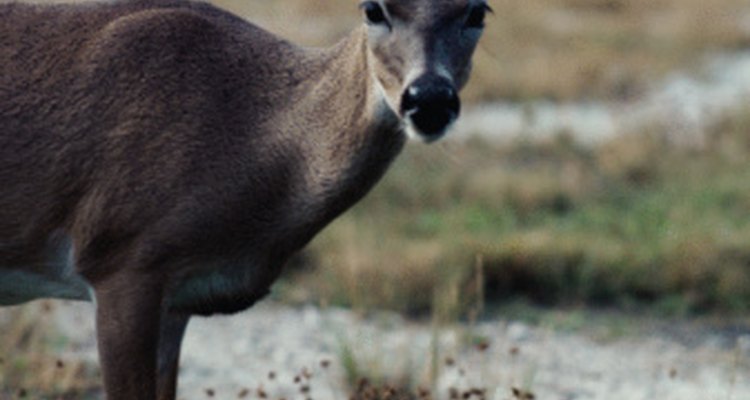
Deer, or venison, link sausage is often seasoned and processed so it is ready to eat straight from the roll. However, cooking it can bring out some of the flavors of this wild game. If the deer meat is raw and unprocessed, make sure it's cooked all the way through.
Processed Meats
Put the ground venison links into a bowl and mix them with the following ingredients: mustard powder, a clove of garlic, cayenne pepper and smoked salt. You should add a tablespoon of mustard powder for every half pound of venison. Another option is chop up the venison links and mix them with chopped pieces of pork sausage links. But you'll want to add only half as much pork sausage as venison, keeping it at a two-to-one ratio.
Mix in a special marinade if you want to bring out a certain flavor. Make sure that you only use the recommended amount of marinade dressing based on the instructions on the marinade container.
Cover the mixing bowl with plastic wrap and allow it to sit in the refrigerator for 24 hours.
Preheat the oven to either 140 or 280 degrees Fahrenheit, depending on how much time you have to cook the venison links -- or if you want to slow roast them. According to the Easy Cooking Guide, if the oven is set at 140 degrees Fahrenheit, the venison will take up to eight hours to cook. The cooking time will be halved at 280 degrees.
Place the venison sausage links on a rack, allowing at least an inch between links, to account for swelling as they bake. Allow the venison sausages to cool for five minutes prior to consumption.
Fry the venison sausage links in a pan instead of baking them if you want to eat them with less cooking time. Use olive oil in a frying pan and add the venison links, cooking them at a medium heat. Roll the links over multiple times while cooking. Use a knife to cut open each link to make sure it's cooked all the way through. As an option, you may want to add fresh cilantro or a reduction sauce, a liquor, a wine or an ale, along with a few mixed berries halfway through the cooking process.
Steam the venison sausage links by adding them to a steamer along with a cup of ale. Set the stovetop temperature to medium heat for 10 minutes. After steaming the sausage links, toss them on the grill for another five to 10 minutes. Cut into them with a knife to make sure they are cooked all the way through.
Related Articles

How to Cook Turkey Bratwurst in the Oven

How to Cook Bone-In Pork Strips in the ...
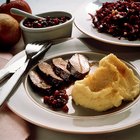
How to Make a Venison Rub
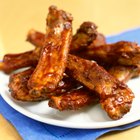
How to Bake Spare Ribs Before BBQing

Baking Homemade Venison Sausage in a ...

How to Make Venison Bratwurst

Do You Cook Sausage First When Pickling ...

How to Steam Cook Bratwurst

How to Heat Pre-Cooked Hams
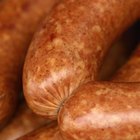
Ways to Cook Beer & Onions With Smoked ...

How to Smoke Pork on a Gas Grill
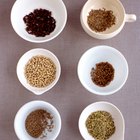
How to Smoke a Brisket & Finish it in ...

How to Grill Ground Deer Sausage

Types of Portuguese Sausage

How to Cook Venison Backstrap Steaks on ...
The Best Way to Cook Italian Sausage ...

How Long Do You Smoke Sausage?
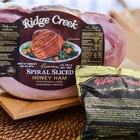
Cooking Instructions for a Ridge Creek ...
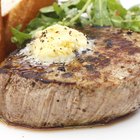
How to Grill Pork Tenderloins on a ...

How to Pickle Brine Sausage
References
Resources
Tips
- If you know that your venison sausage came from tender cuts, it should be cooked to an internal temperature between 130 and 140 degrees Fahrenheit to a doneness level of medium-rare. Working cuts, which have more connective tissues, should be cooked at a low temperature over a longer period of time until the internal temperature measures 220 to 280 degrees.
Warnings
- If you are purchasing or acquiring prepackaged venison meat, make sure it is within the expiration date (if available) and that the packaging does not have any holes or punctures in it. If the raw meat smells bad, do not eat it.
Writer Bio
David McGuffin is a writer from Asheville, N.C. and began writing professionally in 2009. He has Bachelor of Arts degrees from the University of North Carolina, Asheville and Montreat College in history and music, and a Bachelor of Science in outdoor education. McGuffin is recognized as an Undergraduate Research Scholar for publishing original research on postmodern music theory and analysis.
Photo Credits
Jupiterimages/Photos.com/Getty Images